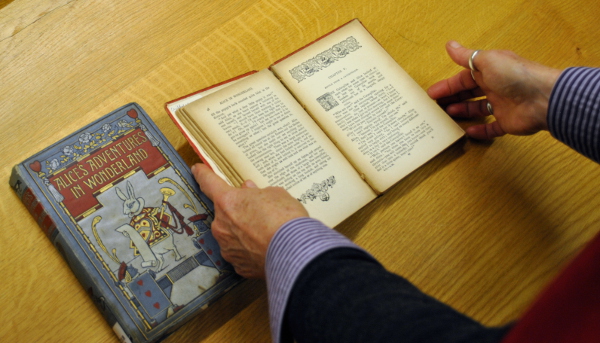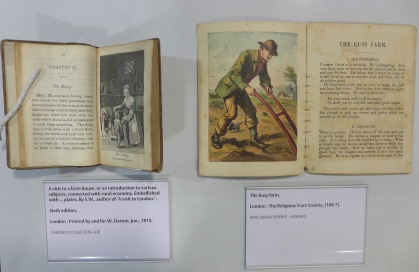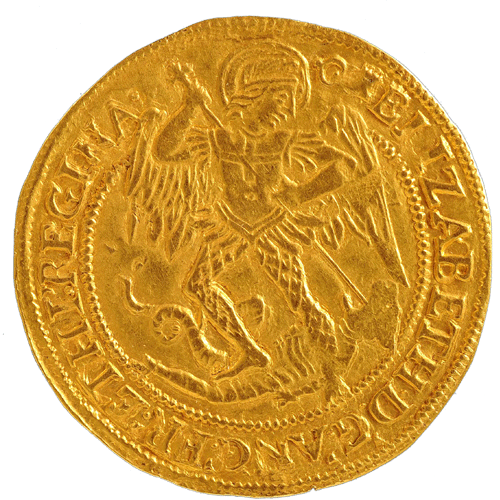To celebrate 150 years since the publication of Alice’s Adventures in Wonderland, Rural Reads Plus chose the book for their February meeting. For many of the group it meant rereading the book and revisiting childhood memories. I always enjoy rereading childhood favourites; when we read Wind and the Willows in February 2011, there was so much discussion and so many memories shared. Alice’s Adventures in Wonderland is still a constant part of our popular culture, and only a few years ago there was a new film adaption starring Johnny Depp in the cinemas. I found it fascinating to reread the actual story and see if my memory of it had been altered by so many interpretations.
I’m sure most people know the Alice story, but here’s a brief overview. A young girl called Alice falls down a rabbit hole and into a strange world of eccentric characters all living under the tyranny of the Red Queen. It’s the strange and eccentric characters that really make the book so memorable and fascinating, not just to the wild imagination of younger readers but also by highlighting the familiar characteristics of real people these characters portray.
One of the pleasures of the rereading this book is the illustrations. The most famous and recognisable are the original illustrations by John Tenniel, who was an artist for Punch. Of course our vast and amazing Special Collections have some editions of Alice’s Adventures in Wonderland, and our Librarians displayed some interesting editions, including Russian and Latin translations. Each of these editions had their own unique illustrations, which proves how much of a visual and colourful book this is.

Getting to see items from the rare books and archive collections is a regular part of the book group
The character of Alice sums up British attitudes during the late 19th century, and Alice’s obnoxious and fearless attitude provides an insight into contemporary British ideas as well as those of the Empire. As a character the group found her annoying; we felt she was used as a catalyst rather than a sympathetic endearing character.
We all enjoyed rereading – and for some of us reading it for the first time – as we all remembered the book as vignettes rather than a whole story. The story of Alice and the characters she meets are so enduring and continue to fascinate and enthral us. I was recently in the children’s section of a book shop looking for a copy for my niece, and I was spoilt for choice. From popular films, pantomimes to even appearing in rock music (I’m sure we all remember Jefferson Airplane’s ‘White Rabbit’ – available on YouTube), Alice’s Adventures in Wonderland continue to play a significant part in our popular imagination.
The next book we’re reading is Winter Sonata by Dorothy Edwards, and we’re meeting on Thursday 26 March at 5.30pm.











